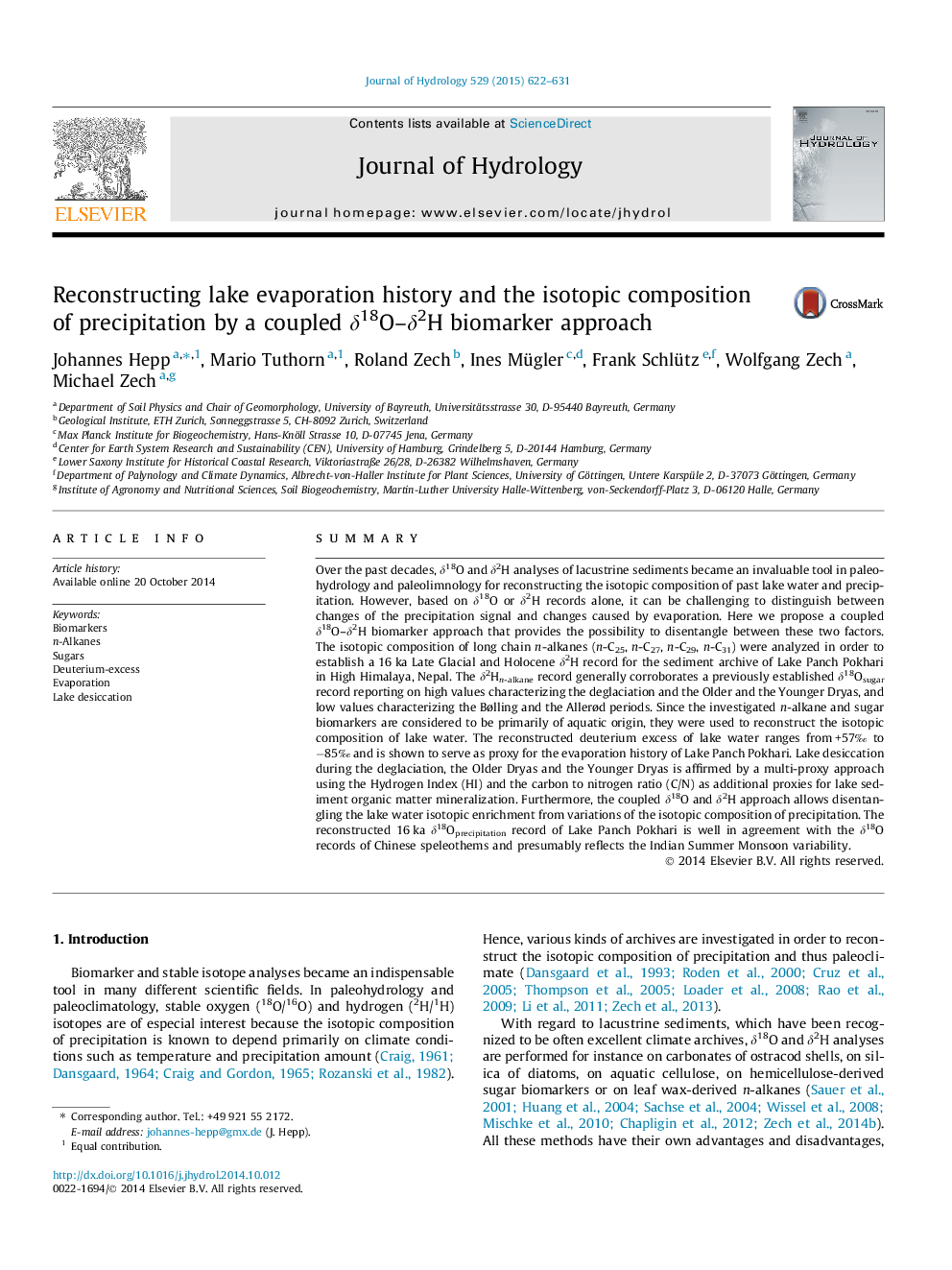| Article ID | Journal | Published Year | Pages | File Type |
|---|---|---|---|---|
| 4575933 | Journal of Hydrology | 2015 | 10 Pages |
•δ2H biomarker record was established for a lake sediment archive.•16 ka δ18Osugar and δ2Hn-alkane biomarker records follow similar trends.•δ18O/δ2H differences are explained by evaporative isotopic enrichment of lake water.•Reconstructed d-excess of lake water serves as proxy for evaporative losses.•A coupled δ18O–δ2H approach allows a model-based reconstruction of δ18O/δ2Hprec.
SummaryOver the past decades, δ18O and δ2H analyses of lacustrine sediments became an invaluable tool in paleohydrology and paleolimnology for reconstructing the isotopic composition of past lake water and precipitation. However, based on δ18O or δ2H records alone, it can be challenging to distinguish between changes of the precipitation signal and changes caused by evaporation. Here we propose a coupled δ18O–δ2H biomarker approach that provides the possibility to disentangle between these two factors. The isotopic composition of long chain n-alkanes (n-C25, n-C27, n-C29, n-C31) were analyzed in order to establish a 16 ka Late Glacial and Holocene δ2H record for the sediment archive of Lake Panch Pokhari in High Himalaya, Nepal. The δ2Hn-alkane record generally corroborates a previously established δ18Osugar record reporting on high values characterizing the deglaciation and the Older and the Younger Dryas, and low values characterizing the Bølling and the Allerød periods. Since the investigated n-alkane and sugar biomarkers are considered to be primarily of aquatic origin, they were used to reconstruct the isotopic composition of lake water. The reconstructed deuterium excess of lake water ranges from +57‰ to −85‰ and is shown to serve as proxy for the evaporation history of Lake Panch Pokhari. Lake desiccation during the deglaciation, the Older Dryas and the Younger Dryas is affirmed by a multi-proxy approach using the Hydrogen Index (HI) and the carbon to nitrogen ratio (C/N) as additional proxies for lake sediment organic matter mineralization. Furthermore, the coupled δ18O and δ2H approach allows disentangling the lake water isotopic enrichment from variations of the isotopic composition of precipitation. The reconstructed 16 ka δ18Oprecipitation record of Lake Panch Pokhari is well in agreement with the δ18O records of Chinese speleothems and presumably reflects the Indian Summer Monsoon variability.
